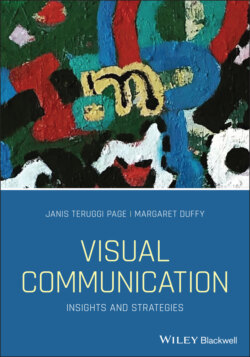Читать книгу Visual Communication - Janis Teruggi Page - Страница 37
HOW VISUALS WORK: ETHICAL IMPLICATIONS
ОглавлениеLO1 Understand the ethical dimensions of visual communication
You can imagine how our quick assessments of others and their possible intentions toward us can be either adaptive or damaging. These instant evaluations are heuristics, or shortcuts, in thinking. They may also be forms of stereotyping. We may conclude that an older person is unimportant, an unattractive individual is less competent, or a member of a minority is somehow threatening (Belluck, 2009).
You likely have seen images of American indigenous people appropriated in professional and college sports logos, essentially promoting a warrior identity as well as commodifying it. In their edited volume, Images that Injure: Stereotypes in the Media, Ross and Lester provide a compilation of images and critiques on gender and sexuality, race and ethnicity, religion, and nationality (Ross, 2011, p. 3). Sexualized stereotypes of both women and men have been heavily used in advertising.
Significantly, much research on visuals and stereotyping suggests that media depictions are more likely to stereotype African Americans as violent criminals, and people draw negative conclusions from those stereotypes (Welch, 2007). Some studies show that video newscasts are more likely to show African American men as angry and handcuffed, and others conclude that crime reporting often demonizes African Americans (Anderson, 1995; Gerbner, 2003). Welch (2007) writes, “these images are so widespread that it would not be surprising if much of American society has subconsciously come to accept the visual portrayal of Blacks as criminals in contemporary society” (p. 281–282). This doesn't mean that news media workers are purposely portraying minorities in a negative way. It does mean that they are likely interpreting events through stereotypes and shortcuts.
In the same vein, visuals have important political implications, particularly in an age of easily shared photos, symbols, and mashups. Research shows that looks matter. Ballew and Todorov (2007) asked participants to quickly glance at photos of real candidates who were unknown to the participants and then choose their favorites. It turned out that even though people in the study had no knowledge of the candidate they selected, their snap judgments predicted almost 70% of the winners of US House and Senate races. Thus, as Page and Duffy (2018) point out, in a world increasingly dominated by visual messages distributed largely in online settings, we tend to draw critical inferences about people based on very little real information.
The power of images to be interpreted as evidence of what's real and true also can be used for unethical purposes, intentionally, or unintentionally. Visuals embrace us, excite us, strike us, hurt us, lift us up, and make us yearn. The power of visuals and their representation of what looks like reality makes them particularly interesting and important to study from the standpoint of ethics.
Ethical issues in any field – and especially in media – arise when different interests and intentions collide. As Patterson and Wilkins (1997) put it, “Ethics is less about the conflict between right and wrong than it is about the conflict between equally compelling (or equally unattractive) values and the choices that must be made between them” (p. 3).
For example, a journalist may take a compelling photograph or video of a person who has been hurt or injured because they wish to highlight an important event or social issue or simply because it appears to be newsworthy. Some may argue that the most important ethical value in this situation is the journalist's duty to depict the truth. Others may say that showing graphic images is offensive and may invade the privacy of an individual or their family and thus would be ethically questionable.
